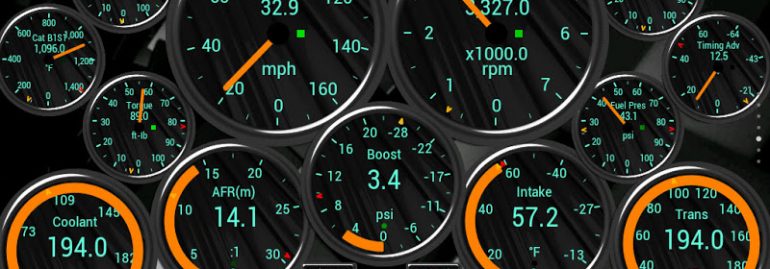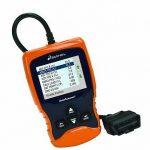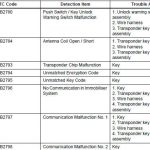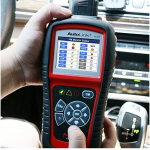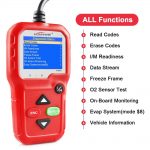
There are several different types of codes a car might produce. These include Generic, manufacturer-specific, and Powertrain codes. Knowing which codes are causing your car problems will allow you to determine the exact problem. To get started, download the codes diagnostic automobile software and follow the directions on the screen.
After you’ve installed the software, you’ll need to connect your car to a diagnostic service center. They will then be able to help you repair any problems that your car may be having.
OBD II codes
OBD II codes are computer-readable codes that contain four numbers and a letter prefix. The codes are retrieved by a scan tool, which you can use to troubleshoot your automobile and determine if there are problems with its system. The first numeric digit indicates the type of code, while the second and last digits indicate a specific type of fault designation. There are more than 3k OBD II codes for different car makes, and your drivers manual should contain a list of these.
The OBD2 port is found beneath the dashboard or in areas four to nine. A simple wired hand-held scanner will display a list of codes. You should research the codes you’ve obtained online and write down the codes for future reference. If you’re unsure of what each code means, look online or at a service center. If you’re unsure, ask a technician to help you with your car’s diagnosis.
Understanding OBD codes is an important aspect of vehicle maintenance, and is an important part of fleet management. Often, the Check Engine light (also called the “Check Engine”) is a signal from your car’s onboard diagnostic system. Unfortunately, a check engine light won’t tell you if the problem lies in the fuel system, ignition, or transmission. An OBD II code can tell you exactly where the issue lies in your vehicle and where to begin fixing it.
Generic or manufacturer-specific codes
The on-board diagnostics system of a car contains a database of trouble codes that identify a problem with a vehicle. These codes are grouped into three categories: B-codes, manufacturer-specific codes, and generic codes. The generic codes are those used by most automobile manufacturers, and the manufacturer-specific codes are specific to a particular car model. As such, when your car develops a problem, you can only get a diagnosis if you know the code for the specific problem.
A DTC indicates a problem with the engine. If a DTC is set on a problem that is likely to come back, it indicates a problem that will require immediate repair. A manufacturer-specific code, on the other hand, may not be as severe as a generic code. An example of a generic code would be ‘CEL’. These are codes that are more likely to occur when a fault is not resolved immediately.
The first digit of a trouble code indicates whether a particular problem is generic or manufacturer-specific. Typically, a car’s engine, transmission, and drivetrain are covered by the B-code category. Other systems covered by the C-code category include the brakes, tires, and chassis. The U-codes category includes codes that are common to many cars, including hybrid cars.
Powertrain codes
Powertrain codes are a type of fault code that indicates a particular problem with a vehicle’s engine. These codes are usually composed of five digits: P0030 indicates a powertrain issue, while a code of 0 means a generic problem. A code of 3 is related to the ignition system. Powertrain codes can indicate a variety of problems ranging from a warning light to complete engine failure.
These codes are divided into several categories, with each describing one part of a vehicle. The first category of codes is body, while the second category is chassis, which covers the rest of the car. Codes of this type are also found for other parts of the vehicle, such as the network or communications system. These codes can be difficult to interpret unless you have a professional scanner. However, if your vehicle has any problem affecting the engine or transmission, a good diagnostic tool will tell you right away.
The second category is P0488. It denotes a malfunction in the EGR system. The powertrain control module (PCM) detects an error in the EGR system when the pressure switch is not set properly. This error code is also known as the p0488 error code. The p0488 error code can be caused by a variety of problems, including a malfunctioning MAP sensor or an improper wiring connection.
U-codes
There are several ways to read a vehicle’s OBD2 trouble codes. These can be generic or manufacturer-specific. Some popular car makes are Acura, BMW, Chevrolet, Dodge, Chrysler, Jeep, Land Rover, Lexus, Mitsubishi, Nissan, and Subaru. Using a tool like the OBD-II scanner, you can determine the specific fault code your car is experiencing. A car’s manual will list all the codes for your car, and you can look them up online and learn more about them.
To learn how to read your car’s codes, you can also visit an auto parts store. They will probably be able to read the codes for free, as they have to sell you parts. However, if you are unsure what codes your vehicle has, there are many resources available for troubleshooting. You can even try to reset your vehicle’s computer by disconnecting and reconnecting the battery. This will clear any fault codes that may be logged.
Besides the codes mentioned above, you can also check your car’s mileage to determine whether it is a good idea to have your car checked by a mechanic. The problem may be a minor one, or something more serious. Either way, it is important to get a vehicle checked regularly for any symptoms or issues. While it’s easy to do with a scan tool, it is highly recommended that you consult an auto mechanic for the necessary diagnosis.
Check engine light
A check engine light on your car indicates a problem, and this is no time to panic! First, try driving around and see if it’s working normally. If so, take it to a mechanic for further testing. Some common problems can be spotted with the use of diagnostic codes. A system that is too lean means there’s not enough oxygen in the engine, or too rich means too much gasoline. In either case, a trip to a mechanic is highly recommended.
The Check Engine Light on your car will indicate a range of problems, but the codes can be a good starting point for diagnosis. For example, a broken wire, sensor, relay, or hose may indicate a simple problem such as a loose gas cap. Alternatively, the light could indicate a more serious issue, such as a faulty electrical circuit or lean air-fuel mixture. Whatever the cause, it will help you determine the best course of action.
The Check Engine Light code is provided by the car’s computer system and is a helpful guide in figuring out what the problem is. The codes are represented by five-digit numbers or letters and are displayed on a scanning device when connected to the OBD port. Usually, a mechanic will charge for diagnostic work, although this fee is typically waived if you have the car serviced in their garage. But if you don’t know much about the technology behind the Check Engine Light, it might be time to consider a more advanced method.
Interpreting fault codes
The OBD (On-Board Diagnostics) system is designed to identify the causes of vehicle malfunctions by providing a specific code. Most problems are characterized by generic codes, while others are manufacturer-specific. These are commonly known as generic codes. In addition to the generic codes, your vehicle may also display codes relating to the fuel and air metering systems or the ignition system. In such cases, you will need to consult a mechanic to determine the problem and repair it.
Most codes start with p and refer to the powertrain, which means immediate action is required. Some codes, however, are non-critical, meaning they do not require immediate action. They can refer to internal systems, such as the fuel tank, and will require further diagnostics to identify the exact issue. For example, if you notice that your car is making a strange noise while driving, it may be a symptom of a problem with its cooling system.
The P0300 DTC code can indicate a number of problems, such as a malfunctioning engine, transmission, or fuel system. This code usually appears in combination with codes P0301-P0308. A similar code, called a “J1939” code, can indicate a malfunction with an air metering system or fuel pump. It is important to know how to interpret these codes to make sure you are fixing the issue correctly.


